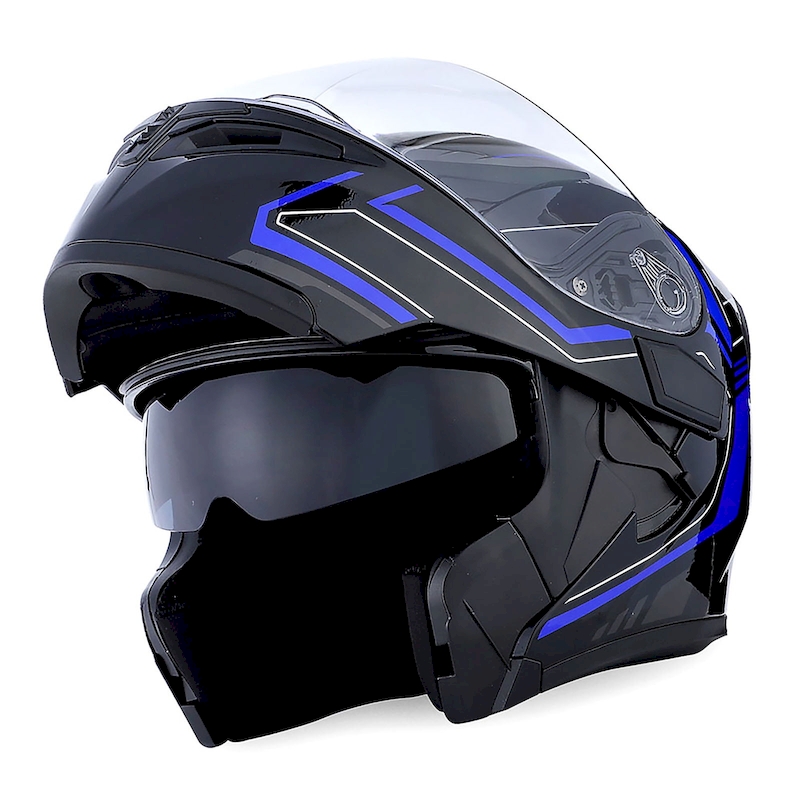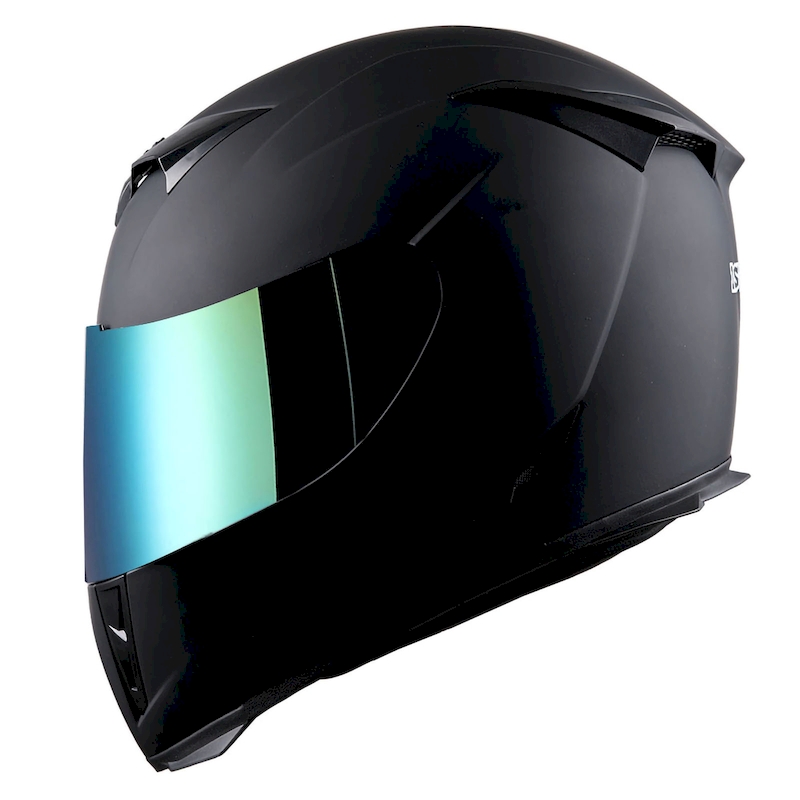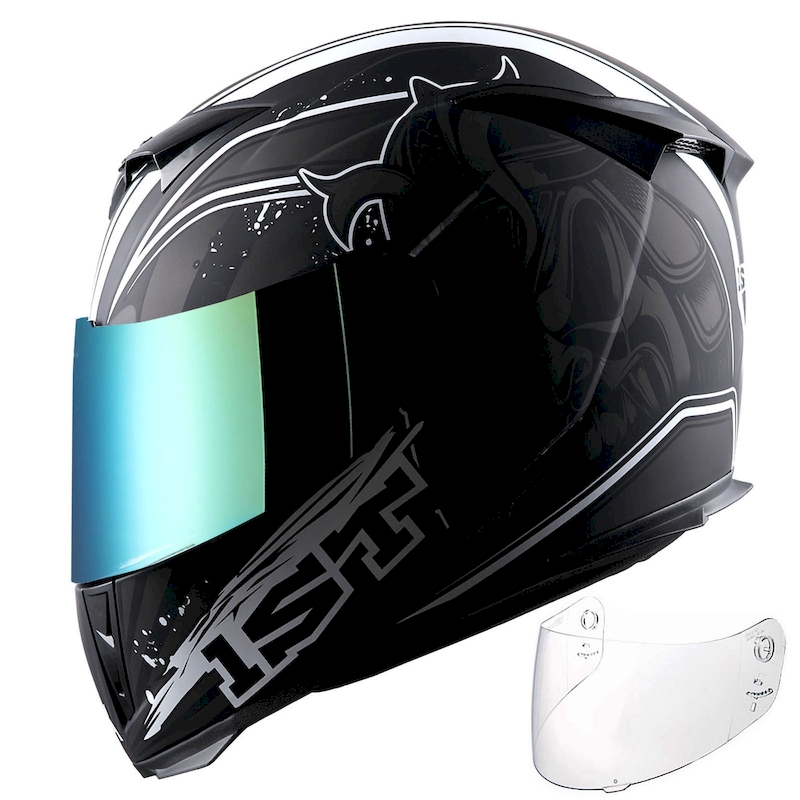When it comes to riding a motorcycle, safety should always be the top priority, and the most critical piece of gear that can enhance rider safety is the helmet. The right helmet not only protects the head during a potential crash but also provides comfort, visibility, and even a style statement. However, with numerous brands and styles available on the market, riders often find themselves asking, “What are the best motorcycle helmets?” This article aims to answer that question by examining various types of helmets, essential safety features, top-rated brands, and recommendations for particular riding styles. Understanding the differences between full-face, modular, open-face, and half helmets will help you make an informed decision tailored to your riding experience. Additionally, we’ll explore how to properly fit a helmet, care for it, and the latest innovations in helmet technology. By the end of this guide, you will be well-equipped to choose the best motorcycle helmet that meets your needs and ensures your safety on the road.

Why Wearing a Motorcycle Helmet is Essential
The importance of wearing a motorcycle helmet can’t be overstated. Many riders focus on speed and performance but often overlook the necessity of safe riding gear. Understanding why helmets are crucial can help reinforce good practices.
Protection Against Injuries
Statistically, wearing a helmet reduces the risk of head injuries significantly. According to data from the National Highway Traffic Safety Administration (NHTSA), helmets are about 37% effective in preventing fatal motorcycle accidents. A quality helmet acts as the first line of defense against traumatic brain injuries, concussions, and skull fractures.
Legal Compliance
In many countries and states, wearing a helmet while riding a motorcycle is mandated by law. Understanding local helmet laws ensures compliance with regulations, preventing legal issues and potential fines while promoting safety.
Enhanced Visibility
Many modern helmets come with features that can enhance visibility, such as reflective materials or bright colors. These attributes can make a rider more noticeable to other drivers, reducing the chance of accidents.
Improved Comfort and Experience
Riding can be uncomfortable without the right gear. Wearing a helmet can shield you from wind, rain, and debris while providing comfort during long rides. The best motorcycle helmets are also designed with padding and ventilation systems for added comfort.
Types of Motorcycle Helmets
Choosing the right helmet is crucial for safety and comfort. Each type of helmet serves different purposes and suits varying riding styles. Here are some of the most common types of motorcycle helmets:
Full-Face Helmets
Full-face helmets offer complete protection, covering the entire head, face, and jawline. They are typically favored by sportbike riders and those looking for maximum safety. Features often include:
- Visibility: Most full-face helmets come equipped with a clear face shield that protects against wind and debris while providing a wide field of vision.
- Aerodynamics: Designed for speed, full-face helmets often have a streamlined shape, enhancing stability at higher speeds.
- Safety Standards: These helmets meet stringent safety standards, often including additional padding in all areas to provide additional impact absorption.
Modular Helmets
Modular helmets combine aspects of full-face and open-face designs. They feature a flip-up chin bar that allows the rider to easily switch between full coverage and open-face convenience. Modular helmets are popular among touring riders for their versatile functionality.
- Versatility: Riders can easily lift the chin bar when needed, making it convenient when talking to someone or enjoying a snack without completely removing the helmet.
- Comfort: They generally come with good padding and ventilation options, maintaining comfort during long rides.
- Safety Features: High-quality modular helmets must meet the same safety standards as full-face helmets when closed.

Open-Face Helmets
Open-face helmets cover the top, back, and sides of the head but leave the face exposed. Ideal for cruising and casual riders, these helmets offer considerably less protection than full-face options.
- Freedom of Movement: Open-face helmets provide excellent comfort and a sense of freedom, making them a popular choice for riders who like to feel the wind on their faces.
- Visibility: Riders tend to enjoy enhanced visibility due to the absence of a full visor.
- Noise: These helmets typically allow more road noise than full-face helmets, which may be a consideration for daily riders.
Half Helmets
Half helmets offer the least amount of coverage and protect only the crown of the head. They are favored in warmer climates or by riders who prioritize comfort over protection.
- Lightweight: Half helmets are often very lightweight, making them comfortable for long periods.
- Convenience: They are easy to put on and take off, enhancing convenience for brief rides.
- Limited Protection: While they offer minimal protection, half helmets do not provide any coverage for the face or jaw.
Off-Road Helmets
Designed specifically for motocross and off-road riding, off-road helmets prioritize impact protection and ventilation.
- Visor: Most off-road helmets come with a sun visor that helps shield the rider’s eyes from sunlight and debris.
- Mouth Guard: The design typically features a more extensive mouth guard for improved airflow and safety when riding in rugged terrains.
- Safety: Made to withstand rough conditions, these helmets are very durable and often feature larger ventilation holes.
Essential Features to Consider
When assessing which helmets are best, it’s crucial to consider the specific features each helmet offers. Here are some important elements to evaluate:
Safety Standards
Always ensure that any helmet you consider meets the required safety standards set by organizations such as the U.S. DOT, Snell Foundation, or ECE. These certifications indicate that the helmet has undergone rigorous testing.
Fit and Comfort
A well-fitting helmet is essential for safety and comfort. The helmet should fit snugly without being overly tight. Many brands offer various sizes and shapes to accommodate different head sizes and shapes.
Ventilation
Proper airflow can greatly enhance comfort, especially during long rides or in hot weather. Look for helmets with adjustable vents that allow you to regulate airflow to your preference.
Weight
A lightweight helmet can reduce fatigue during long rides. Heavier helmets may provide more protection but can also lead to discomfort over time. Finding the right balance between protection and weight is essential.
Noise Levels
Consider the helmet’s ability to dampen road noise. While full-face helmets typically offer better sound insulation, many open-face and half helmets can create noise disturbances. If you ride long distances, this feature is particularly important.
Visibility
A helmet with a wide visor improves peripheral vision, which is essential for safety. Some helmets have anti-fog visors or sun visors to enhance visibility in varying conditions.
Build Quality and Design
Investing in a high-quality helmet with solid construction offers more than just aesthetics; it ensures durability and longevity. Various designs and materials can indicate the quality of the helmet, so thorough research is beneficial.
Top Brands for Motorcycle Helmets
With multiple brands on the market, identifying the leading manufacturers can help narrow down options. Below are some of the top brands that consistently produce high-quality helmets known for their safety and performance.
Shoei
Shoei is renowned for its commitment to quality and safety. The brand offers a wide range of full-face and modular helmets, often favored by professional motorcyclists.
- Key Features: Innovative ventilation systems, lightweight designs, and advanced technology in impact absorption.
Arai
Arai helmets are respected for their handcrafted quality. Each helmet is designed with a focus on safety and comfort, targeting both road and off-road riders.
- Key Features: Arai emphasizes the importance of shape and fitting process, resulting in exceptionally comfortable helmets.
Bell
Bell helmets are synonymous with classic motorcycle designs. Known for their stylish options, Bell has made a name across various motorcycle segments, including motocross and street riding.
- Key Features: Stylish designs without compromising safety, including classic half helmets and modern full-face options.
HJC
HJC is a popular choice among budget-conscious riders. The brand offers value without sacrificing essential features. With a diverse selection, HJC helmets remain affordable and reliable.
- Key Features: Advanced aerodynamics, moisture-wicking liners, and impressive graphics.
AGV
Italian brand AGV emphasizes safety and comfort, often favored by sportbike enthusiasts. The helmets focus on reducing weight while ensuring maximum protection.
- Key Features: Innovative designs focusing on safety and aesthetics, particularly in street riding.
Scorpion
Scorpion has made waves in the industry with helmets that combine performance and affordability. Their unique designs and features attract a variety of riders.
- Key Features: Protective features like dual density EPS, quick-release visors, and anti-fog shields.
How to Properly Fit a Motorcycle Helmet
Getting the right fit is crucial to ensuring you receive maximum protection from your helmet. Here’s how to properly fit a motorcycle helmet:
Measure Your Head
To find the right size, measure the circumference of your head about an inch above your eyebrows using a soft measuring tape. Compare this measurement to the manufacturer’s sizing chart to determine your correct size.
Try It On
When trying on a helmet, count on various brands that may fit differently. Put it on and fasten it, ensuring it feels snug but not painfully tight.
Perform a Fit Test
Once you have the helmet on, perform a fit test:
- Check the size: Shake your head up and down along with side to side. The helmet should remain securely in place without shifting.
- Check for pressure points: Identify any areas of discomfort or excessive pressure. If you find any, try a different size or model.
- Chin Strap: Fasten the chin strap and ensure it is comfortably snug but not choking. You should not be able to easily pull the helmet off without unfastening the strap.
Finalize the Fit
If the helmet fits properly, you should feel evenly supported around your head, and it should feel stable. Pay attention to any adjustments by utilizing the internal pads or cheek pads if necessary.
Maintenance and Care for Your Motorcycle Helmet
Taking care of your motorcycle helmet ensures safety and longevity. Here are some essential maintenance tips:
Regular Inspection
Inspect your helmet regularly for signs of wear and tear, such as cracks, dents, or scratches. Regular checks help prolong the life of the helmet and ensure its effectiveness.
Cleaning Your Helmet
Clean the exterior of the helmet with mild soap and water, avoiding harsh chemicals that could damage the finish. Use a damp cloth to remove debris or dirt buildup.
Cleaning the Visor
Clean the visor separately using a microfiber cloth. Most visors come with a protective coating that can be damaged by ammonia-based cleaners. Use specific products designed for visors or a gentle soap mixture.
Storage
Store your helmet in a cool, dry place away from direct sunlight. Use a helmet bag or a designated area to protect it from physical damage. Avoid hanging the helmet by the chin strap, as this can distort its shape over time.
Replacement Guidelines
Most helmet manufacturers recommend replacing your helmet every 3 to 5 years, regardless of visible damage. The materials can degrade over time, reducing effectiveness. Always upgrade your helmet after a significant impact or crash, even if you don’t see any damage.

Conclusion
Understanding what are the best motorcycle helmets involves a multifaceted approach, considering safety, comfort, style, and personal preference. Choosing the right helmet is not just a matter of aesthetics but a critical decision that can affect your safety on the roads.
In this comprehensive guide, we explored the various types of helmets, essential features to look for, top brands, and maintenance practices. By weighing the factors that matter most to you, whether it be the style, fit, or specific features, you can confidently select a motorcycle helmet that best suits your needs.
Remember, investing in a quality helmet can make a significant difference in your riding experience, offering protection while enhancing comfort and style. As you enjoy your rides, prioritize safety and compliance with regulations. It’s not just about looking good on the road; it’s also about being a responsible rider determined to protect yourself while embracing the thrill of motorcycling.